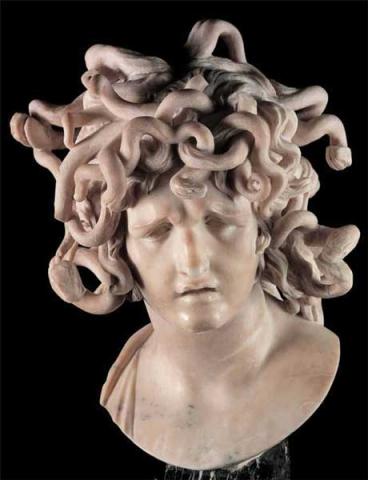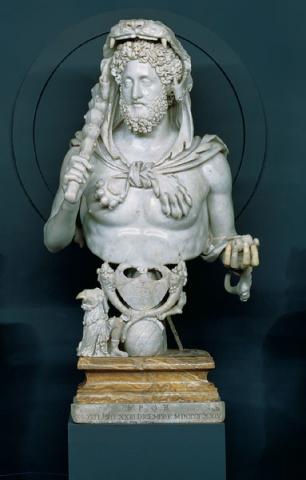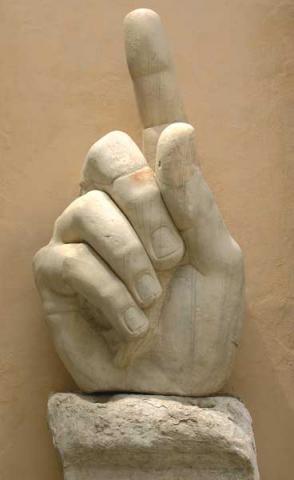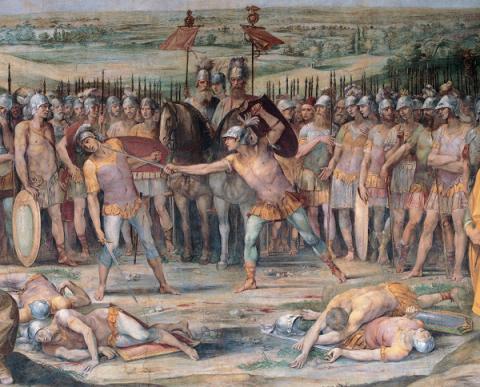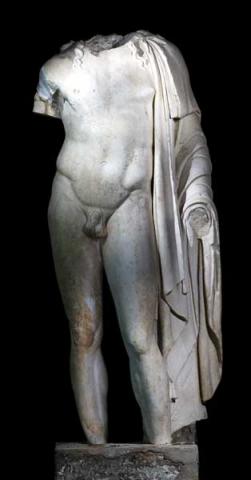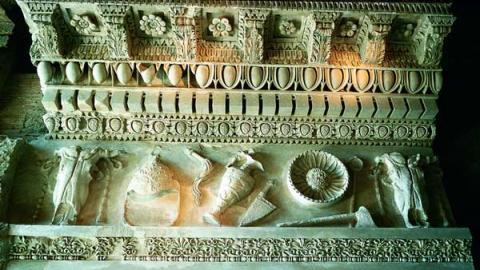Transversal gallery
At the top of the stairs leading up from the Junction Gallery we find the colossal marble statue of Veiovis found in the cell area of the temple, where it must have been the central image of worship. On the right-hand side, protected by glass, we can see the rear portion of the high travertine marble pedestal of the Temple of Veiovis, beyond the remains of the large tufa-stone Tabularium wall, which at this point was indented to allow for the presence of the temple.
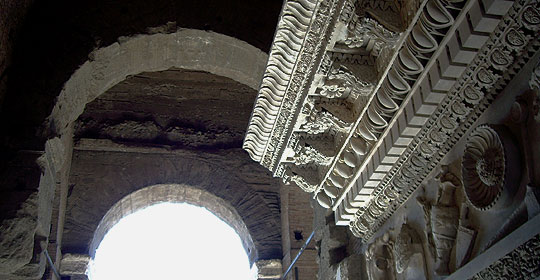
The Temple of Vejovis was discovered in the foundations of Palazzo Senatorio, during excavations carried out in the late 30s to build the gallery that connects the two Capitol buildings. It was characterized by a transverse cella, wider than deep, preceded by a pronaos with four columns; the podium is made of travertine, while the walls of the cella are of Grotta Oscura tufa.
Based on literary sources, the temple was identified as the one dedicated to Vejovis in 192 B.C.inter duos lucos, inter Arcem et Capitolium (between the two woods, between the Arx and the Capitolium).
The building we see today is the result of the refurbishment in the age of Sulla (early first century B.C.) with major renovations during the Flavian period (late second century AD). In the latter period the wooden vault was replaced with one in concrete and the inside decoration of the cella was enriched with inlaid coloured marble.
During the excavations, a cult statue was found in the cella, unfortunately without the head: it depicts a young-looking male deity, twice bigger than the norm, standing naked with a heavy cloak leaning against his left shoulder.
To reach the large gallery facing the Roman Forum one had to go through the cellars, which were originally not accessible.
On the left, some rooms on two floors are worthy of mention, one of which preserves the barrel vault and the white plaster on the walls: though at the same level of the gallery, originally it did not communicate with it and was accessible from the Roman Forum only through a narrow corridor with windows that ran below the gallery; one is supposed to recognize the officina Monetae, namely the mint, placed on the Arx next to the temple of Juno Moneta.
At the end of the corridor leading to the gallery we can see, on the right-hand side, a portion of the trabeation of the Temple of Vespasian and Titus, the remains of which are also visible in the Roman Forum below, next to the foundations of the Tabularium. Directly opposite we can see a modern aperture one of the areas on the north-eastern side of the Tabularium, with white limestone cemented paving.


























